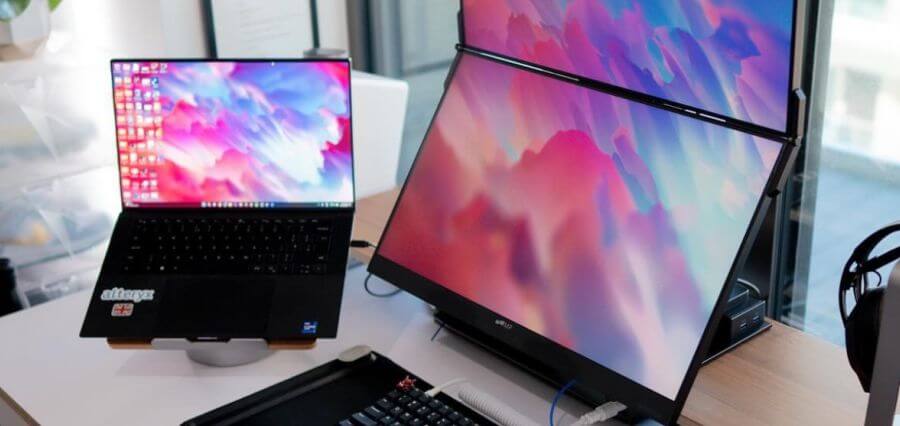
In an era defined by technological advancements and innovation, stacked monitors have emerged as a popular choice for creative professionals and multitaskers worldwide. Designed to streamline workflow, enhance productivity, and maintain quality, these vertical monitors are revolutionizing the way people work. By immersing users in their tasks and enabling them to accomplish more in less time, stacked monitors have become indispensable tools in various industries.
With different display technologies available for stacked monitors, it’s essential to understand the pros and cons of each option. One such widely recommended type is the Geminos stacked monitors, offering users a range of choices. To help you navigate through these different technologies and find the best fit for your needs, this article will explore the various display options in detail.
**The Importance of Display Technologies:**
The significance of display technologies cannot be overstated, as they play a crucial role in enhancing the visual experience, promoting health and wellbeing, and improving energy efficiency. Here are some reasons why you should pay attention to display technologies:
1. **Enhanced Visual Experience:** Display technology directly impacts how information and entertainment are perceived. Advancements such as OLEDs and HDR technology create more realistic and immersive visuals, whether for watching movies, gaming, or design projects.
2. **Impact on Health and Wellbeing:** Prolonged screen time can lead to eye strain and fatigue. Advanced display technologies, such as reducing blue light emissions and flickering, help alleviate these issues and promote healthier screen usage.
3. **Energy Efficiency and Environmental Impact:** Displays can drain device energy significantly. Newer technologies like micro-LEDs offer lower power consumption, leading to longer battery life and a more sustainable future for electronics.
**Various Display Technologies for Stacked Monitors:**
Here’s a breakdown of the most common display technologies for stacked monitors, along with their strengths and weaknesses:
**Liquid Crystal Display (LCD):**
LCD monitors are the most widely used and affordable option, featuring Twisted Nematic (TN) and In-Plane Switching (IPS) panels. While TN panels offer fast response times suitable for basic tasks and gaming, IPS panels provide superior viewing angles and color accuracy, ideal for professional applications.
Advantages of LCD displays include budget-friendliness, wider viewing angles, low power consumption, and sunlight visibility. However, they may have fluctuations in color, contrast, and backlight bleed, making them less suitable for gamers and creative professionals focused on aesthetics and color.
**Light-Emitting Diode (LED):**
LED panels, an enhanced version of LCD, offer improved brightness, contrast, and energy efficiency. With better control over brightness and color accuracy, LEDs are suitable for general users, gamers, and creative professionals. Despite higher costs and limitations in viewing angles, LEDs provide sleek design options, faster response times, and blue light filter features to reduce eye strain.
**Organic Light-Emitting Diode (OLED):**
OLED displays deliver exceptional image quality with perfect blacks, wide viewing angles, and superior contrast ratios. Ideal for graphic designers, content creators, and gamers prioritizing aesthetics and color accuracy, OLEDs can be costly and susceptible to burn-in. Budget-conscious users and those working in bright environments may need to consider alternatives.
**Folding OLED (FOLED):**
This emerging technology allows for flexible, foldable displays perfect for creating curved or angled stacks with minimal bezels. While FOLED technology is not widely available for stacked monitors yet, it offers exciting possibilities for future monitor setups.
Understanding the strengths and weaknesses of these different display technologies will help you make an informed decision when choosing stacked monitors that align with your needs and budget. Whether you prioritize image quality, energy efficiency, or design aesthetics, there is a display technology suited to enhance your productivity and elevate your overall work experience.

